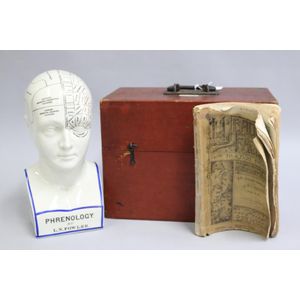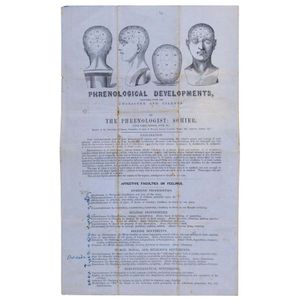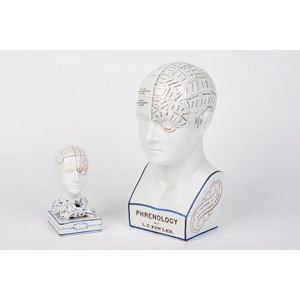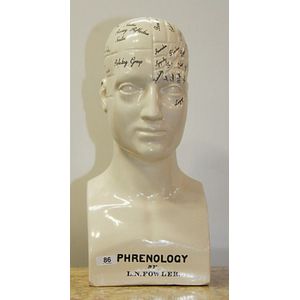
Phrenology Bust: Porcelain Study of the Human Mind
A porcelain phrenology bust, 46 cm high, 25 cm wide, 20 cm deep

Antique Phrenology Head and Book Set
Vintage cased Fowler Phrenology head with a wooden box along with an antique 1885 paper back, Heads and Faces, and how to study Them, by Nelson Sizer and H.S Drayton, Fowler and Wells Co, case 24 cm high, 32 cm wide, 18 cm deep

Phrenology Reports on Melbourne Residents in 1850s
Phrenology in early Melbourne, four written and printed reports on the 'Character and talents' of Melbourne residents of the 1850s, mixed condition., October 1856 - an adult male assessed by Philomon Sohier (at Sohier's Phrenological cabinet, 18 Gt.…

Victorian Phrenology Busts by Fowler and Bridges
Two Victorian phrenology busts, 19th century, one by L. N. Fowler, the other by F. Bridges Phrenologist (2), height 28 cm, 11 cm. Provenance: The Estate of Lady Gabriella Brenner, Bellevue Hill, NSW





 Loading more...
Loading more...